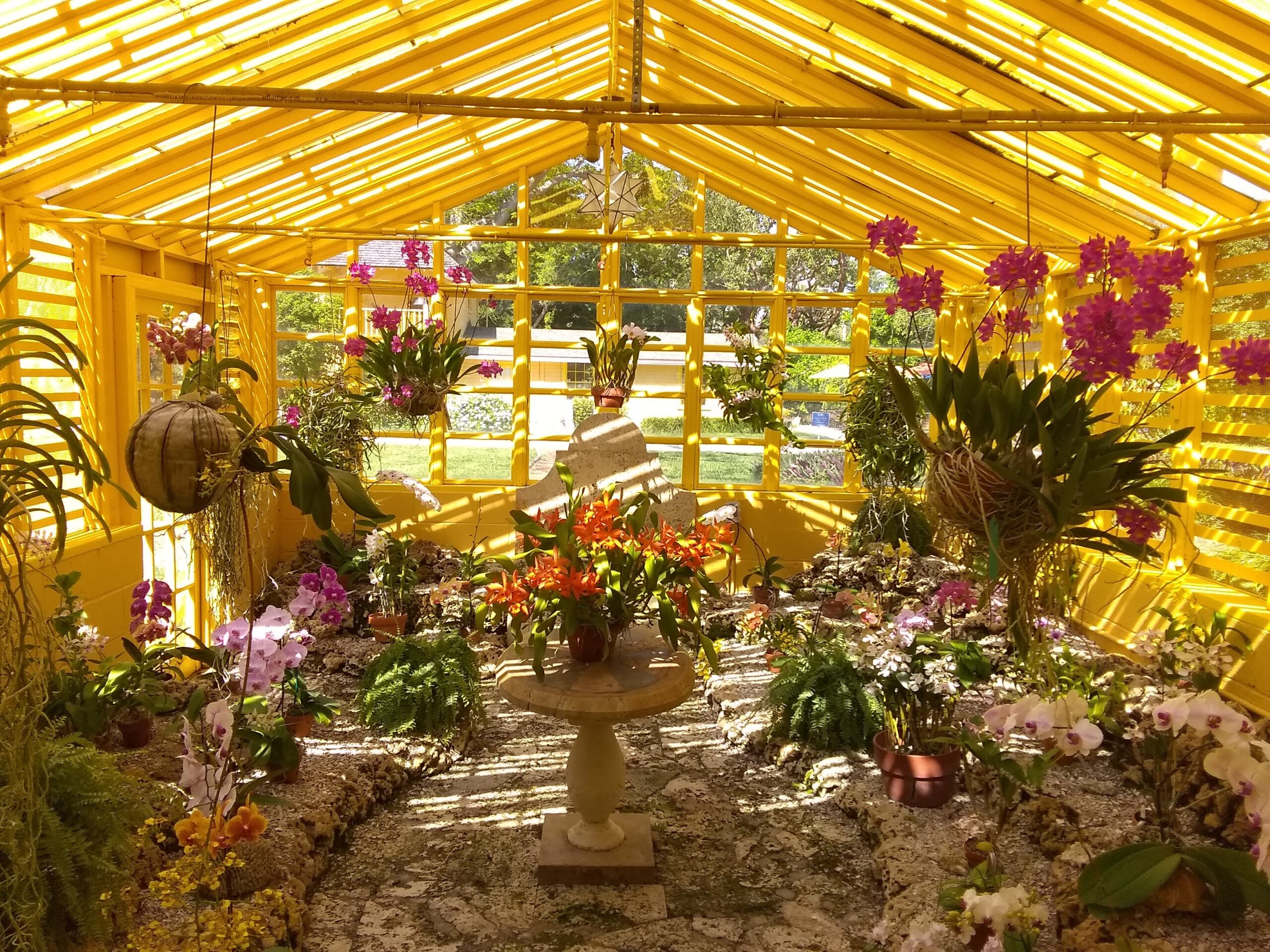
At Bonnet House Museum & Gardens, we understand the importance of caring for one’s orchids, sharing South Florida’s history, and the unique natural environment that we call home. Even in a warm, sunny environment like South Florida, orchids can be a challenge to grow and specific techniques vary based on a multitude of factors. We’ll take some time in this blog to highlight some of the basics of orchid care. The first step to basic orchid care is understanding what type of orchid you want to grow. Each orchid is unique and requires a different balance of sunlight, water and food in order to grow.
The first step is to consider the amount of sunlight your plant will require. Essentially, orchids need just enough sun so that they have somewhat yellow-green foliage and strong, vertical growths. If your orchid is exposed to too much sunlight, the foliage will appear dark green, and will not have the typical strong upright growths.
The roots of your orchid, as well the entire plant will not survive without sufficient exposure to moving air. For this reason, most orchids do not actually grow in soil, with the exception of a few terrestrial varieties. When potting your orchid, your pot should be open with good drainage, but it should still be capable of holding enough moisture to support the plant’s needs. Typically, orchids are intolerant of an environment with little to no airflow. When considering where to keep your orchid, you should ensure that your plant is exposed to gentle air movement at all times. If you are growing your orchid in an indoor environment, you can simply use an overhead fan on a low setting, or a portable oscillating fan that is directed away from the plant.
Watering is the most common issue faced by orchid owners. In order to properly water any plant, you must consider both quantity and frequency. Due to the specific nature of your growing environment and the type of orchid itself, there isn’t an exact answer to how much and how often you should water your orchid. However, the main rule of thumb is to give the plant some water just as it dries out. The most effective way to determine whether or not your orchid has begun to dry out is to insert your finger into the soil and determine the moisture content yourself. This will not cause harm to the plant, and will let you know whether or not it is time to give your orchid some water. When your orchid is ready to be watered, it will require copious amounts. Continue watering your plant until you start to notice water running freely from the drainage holes in the pot. This will not only soak the potting medium, but it will flush away salts that naturally accumulate. At a minimum, be sure to water your orchid at least once a month.
If you care for your orchid properly, it will be able to grow and flower for long periods without the use of fertilizer. However, feeding orchids fertilizer regularly does yield better results. Typically, orchids should be fertilized once a week in the summer and every two weeks during the fall and winter times. Regardless of what brand or type of fertilizer you select for your orchid, most experienced growers recommend that you use no more than one half of the label-recommended strength after you water your plant.
Here, at Bonnet House, we have an orchid curator and orchid care volunteers who maintain the two greenhouses and display house. The Orchid Display House is part of the house tour. Visitors can visit the estate and enjoy a self guided tour of the house and grounds, view the beautiful orchids grown throughout the estate and on display in the Shell Museum Complex. Click here to purchase your tickets.

You’ve got quite interesting collections of orchids in your garden. Such an incredible beauty to behold as they bloom all year round. Monica, I’m fascinated.
Great stuff, Keep up the awesome work.
Love the picture and your blog. Great flowers too! Thanks for sharing.
Enjoyed your blog and the pictures are great. Looks like a fun venue.